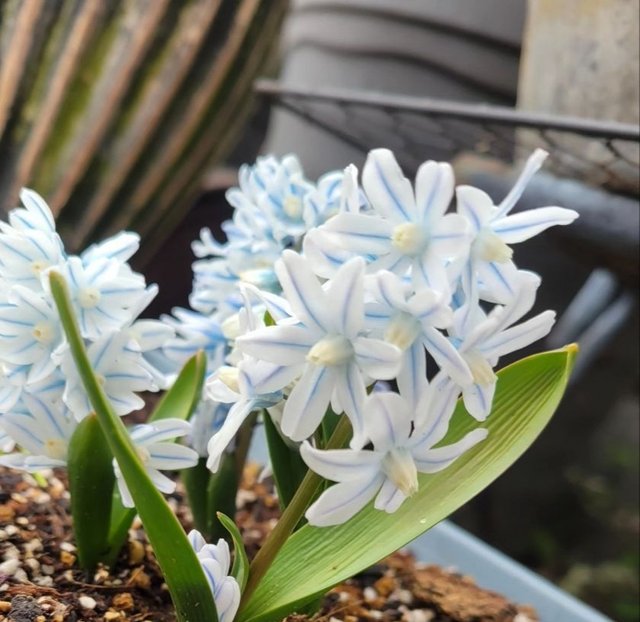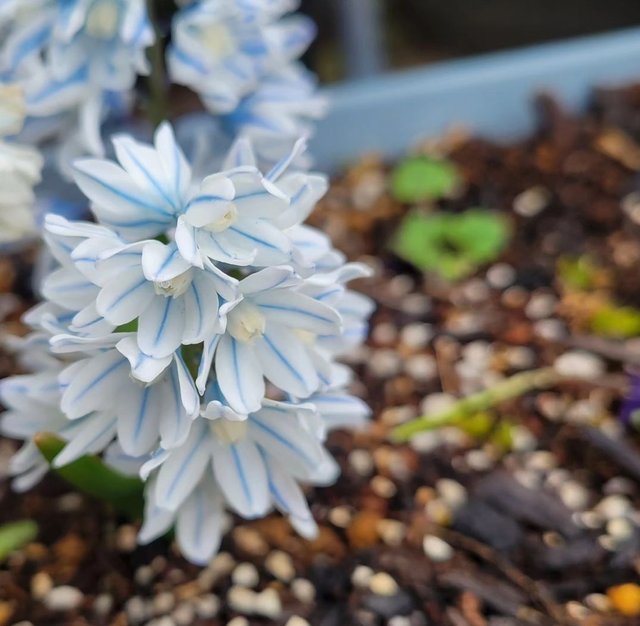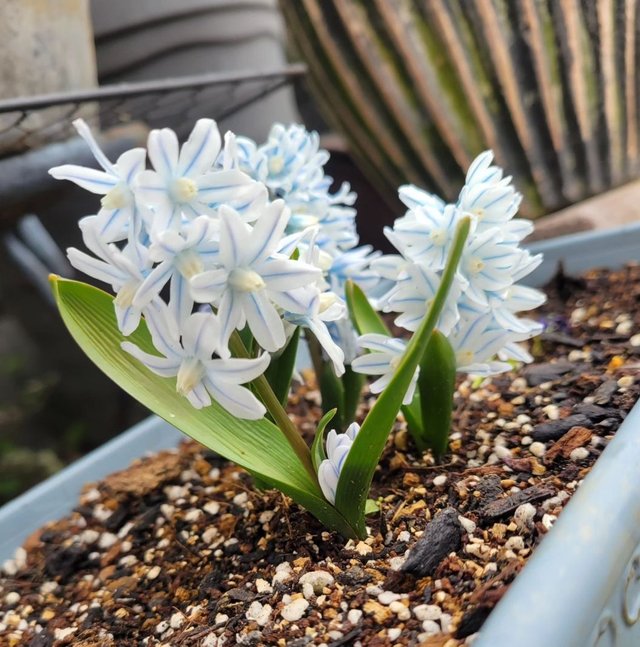



The striped squill flower,is a charming bulbous plant that adds a touch of elegance to any garden landscape. Native to the Caucasus region, these petite flowers are members of the Asparagus family and are renowned for their delicate blue and white striped petals, which resemble the patterns found on certain species of squill.Striped squill flowers typically bloom in early to mid-spring, with each stem bearing a cluster of star-shaped flowers. The petals are pale blue with darker blue stripes running down their centers, creating a striking visual contrast against the backdrop of green foliage. The flowers rise on slender stalks, reaching heights of around 6 to 8 inches,making them perfect for border plantings, rock gardens, or naturalizing in lawns.
In addition to their aesthetic appeal, striped squill flowers hold cultural significance in various regions where they are grown. In their native Caucasus region, these flowers are often associated with the arrival of spring and are celebrated in local festivals and traditions. Additionally, they have been used in traditional medicine for their purported diuretic and antispasmodic properties.One of the reasons why striped squill flowers are beloved by gardeners is their ease of cultivation. They thrive in well-drained soil and prefer full to partial sunlight. These plants are also quite adaptable and can tolerate a range of soil types, including sandy or clay soils. When planting bulbs, it's essential to place them about 3 to 4 inches deep and space them approximately 2 to 3 inches apart.
Once established, striped squill flowers require minimal maintenance. Watering during dry spells and applying a balanced fertilizer in early spring can help promote healthy growth and prolific flowering. After blooming, allow the foliage to die back naturally to replenish the bulb's energy reserves for the following year. Over time, these bulbs will multiply, creating a beautiful carpet of blooms in your garden.Striped squill flowers pair well with a variety of early spring bloomers, including crocuses, snowdrops, and daffodils. Their petite stature makes them an excellent choice for planting beneath taller bulbs or perennials, providing a delightful contrast in height and color. Consider interplanting them with other early flowering bulbs to extend the spring display in your garden.
